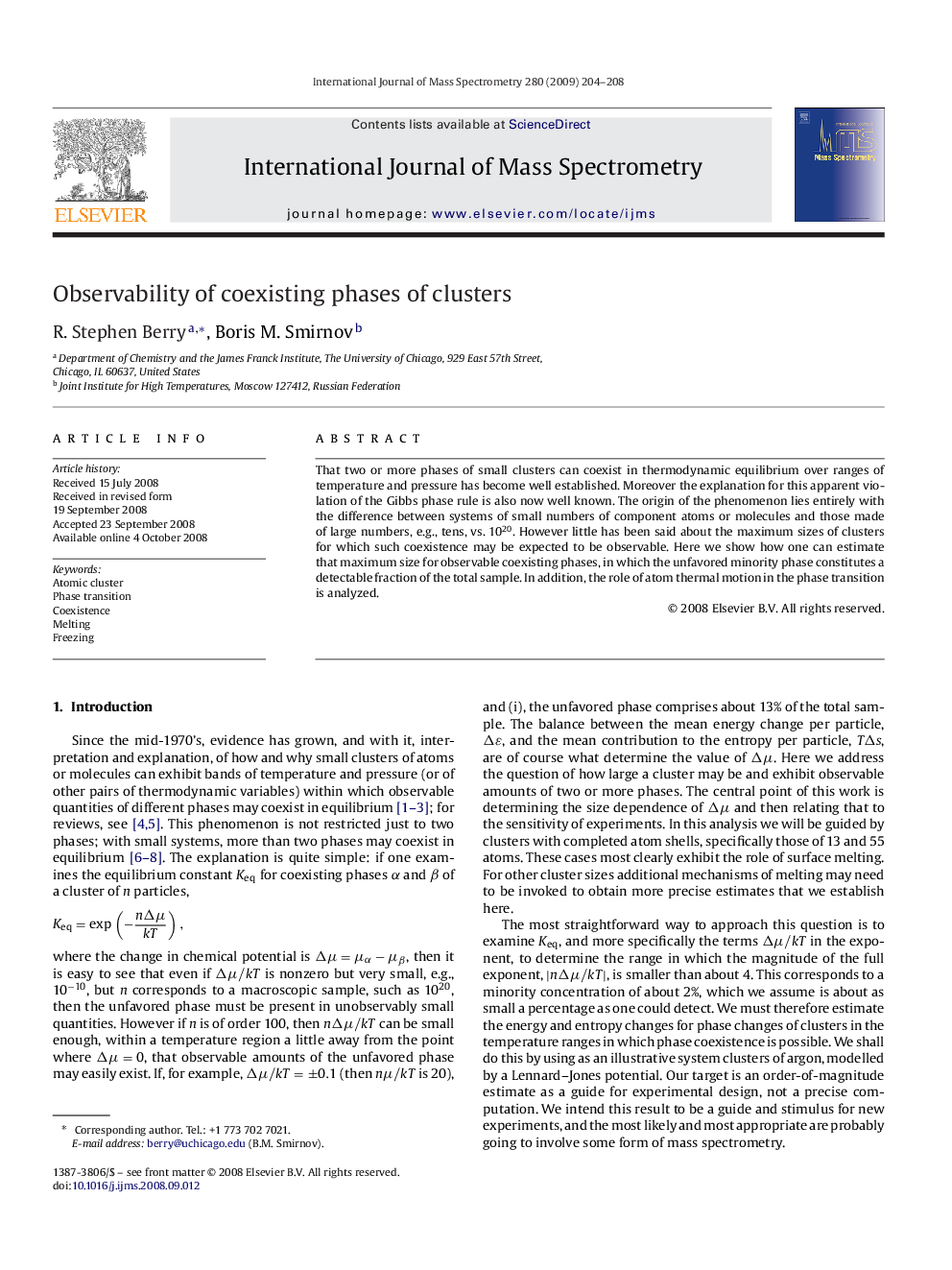| Article ID | Journal | Published Year | Pages | File Type |
|---|---|---|---|---|
| 1194828 | International Journal of Mass Spectrometry | 2009 | 5 Pages |
That two or more phases of small clusters can coexist in thermodynamic equilibrium over ranges of temperature and pressure has become well established. Moreover the explanation for this apparent violation of the Gibbs phase rule is also now well known. The origin of the phenomenon lies entirely with the difference between systems of small numbers of component atoms or molecules and those made of large numbers, e.g., tens, vs. 10201020. However little has been said about the maximum sizes of clusters for which such coexistence may be expected to be observable. Here we show how one can estimate that maximum size for observable coexisting phases, in which the unfavored minority phase constitutes a detectable fraction of the total sample. In addition, the role of atom thermal motion in the phase transition is analyzed.
